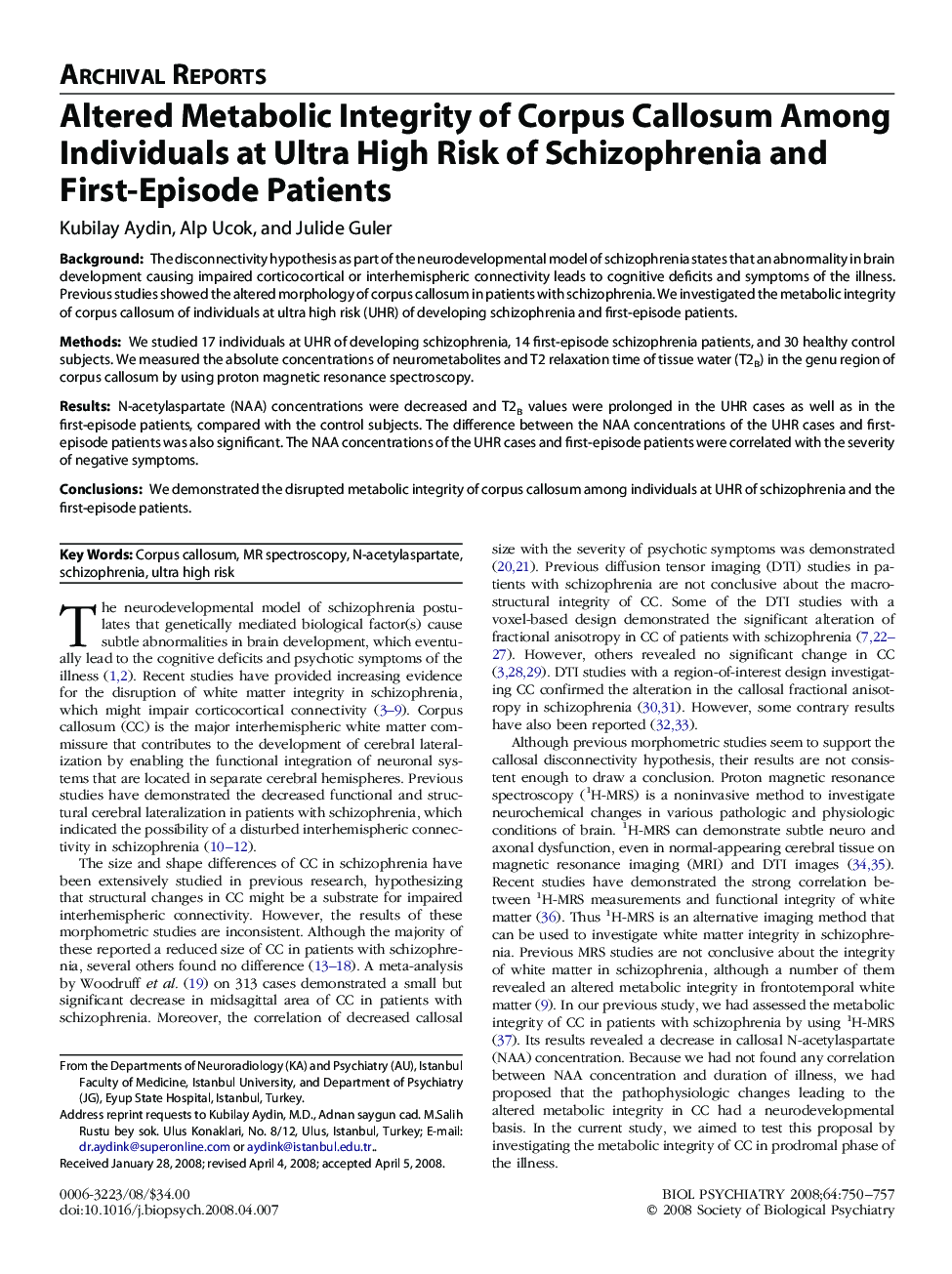| Article ID | Journal | Published Year | Pages | File Type |
|---|---|---|---|---|
| 4179552 | Biological Psychiatry | 2008 | 8 Pages |
BackgroundThe disconnectivity hypothesis as part of the neurodevelopmental model of schizophrenia states that an abnormality in brain development causing impaired corticocortical or interhemispheric connectivity leads to cognitive deficits and symptoms of the illness. Previous studies showed the altered morphology of corpus callosum in patients with schizophrenia. We investigated the metabolic integrity of corpus callosum of individuals at ultra high risk (UHR) of developing schizophrenia and first-episode patients.MethodsWe studied 17 individuals at UHR of developing schizophrenia, 14 first-episode schizophrenia patients, and 30 healthy control subjects. We measured the absolute concentrations of neurometabolites and T2 relaxation time of tissue water (T2B) in the genu region of corpus callosum by using proton magnetic resonance spectroscopy.ResultsN-acetylaspartate (NAA) concentrations were decreased and T2B values were prolonged in the UHR cases as well as in the first-episode patients, compared with the control subjects. The difference between the NAA concentrations of the UHR cases and first-episode patients was also significant. The NAA concentrations of the UHR cases and first-episode patients were correlated with the severity of negative symptoms.ConclusionsWe demonstrated the disrupted metabolic integrity of corpus callosum among individuals at UHR of schizophrenia and the first-episode patients.
